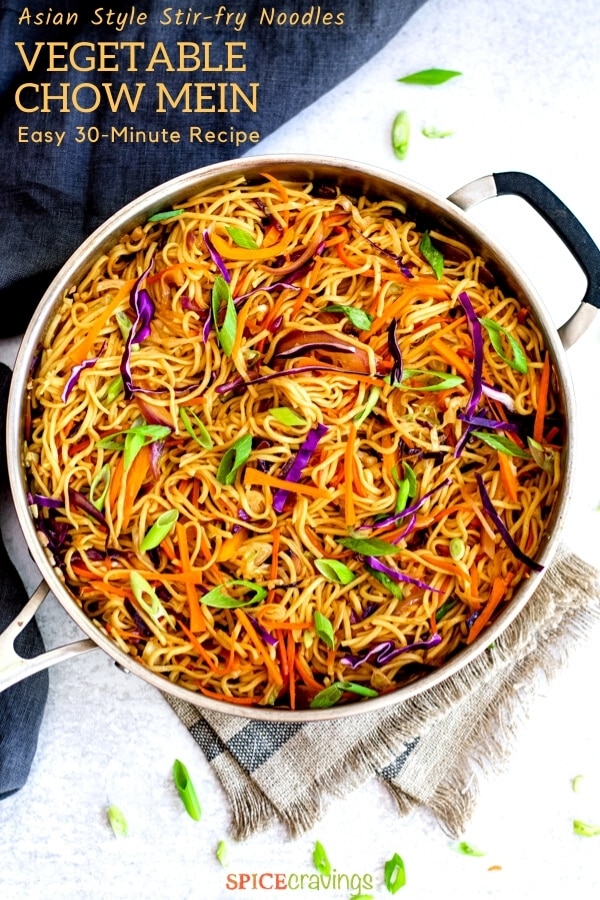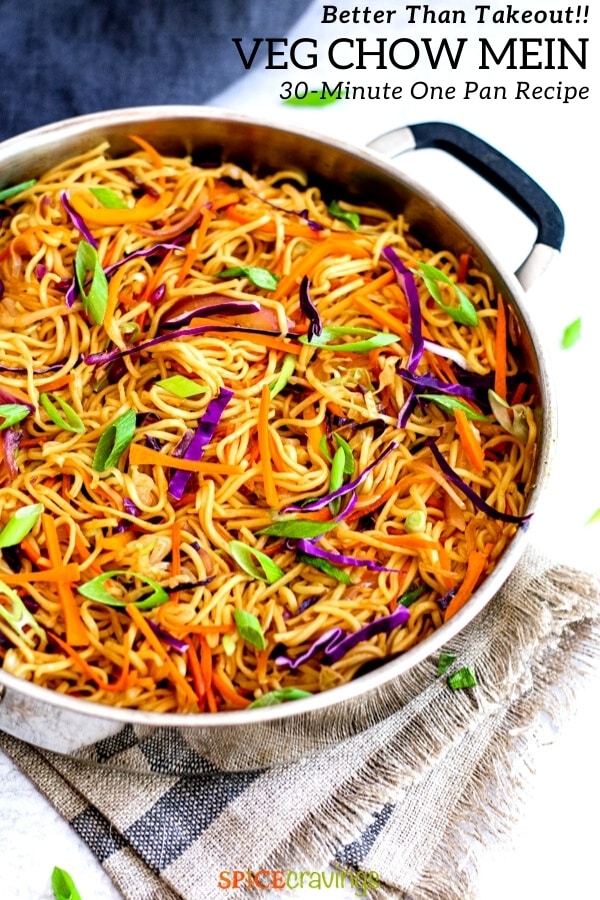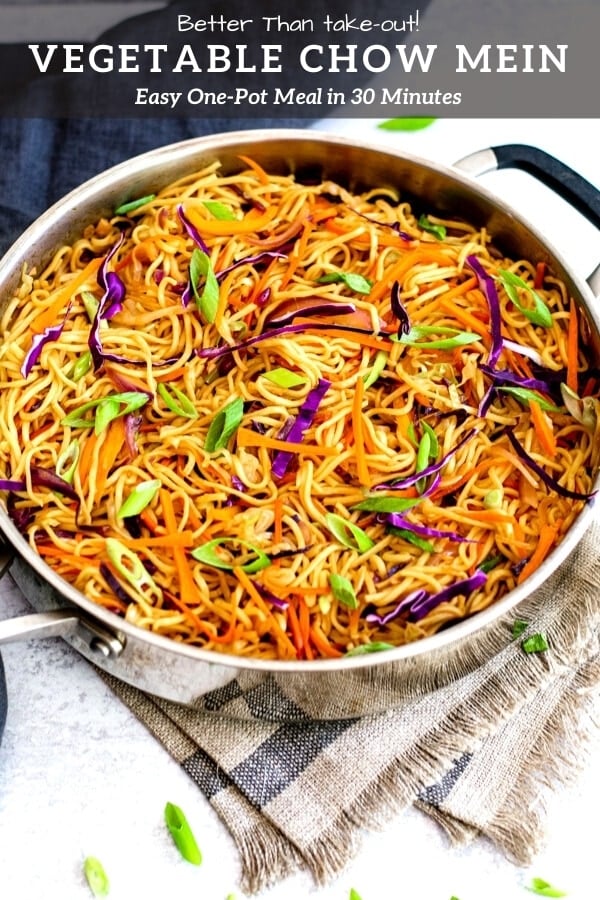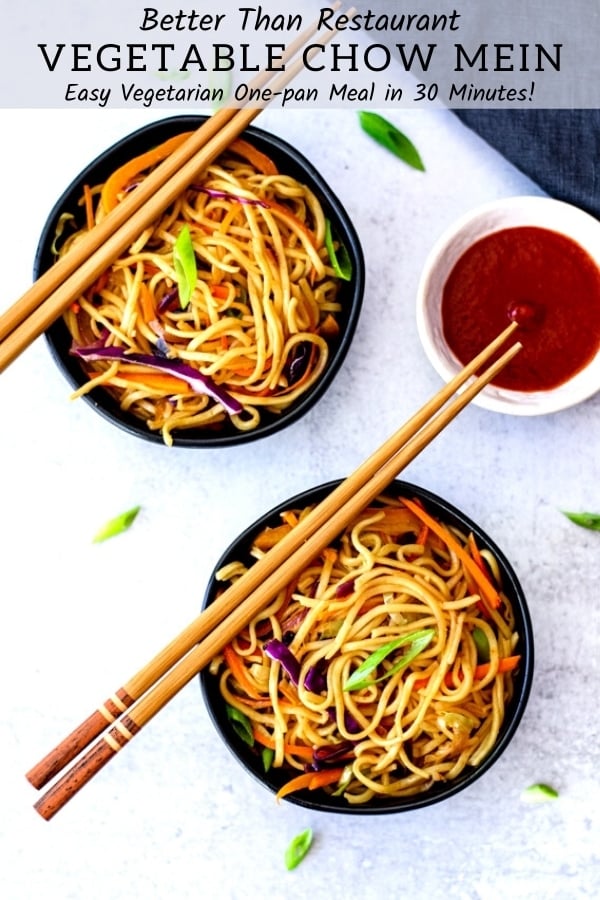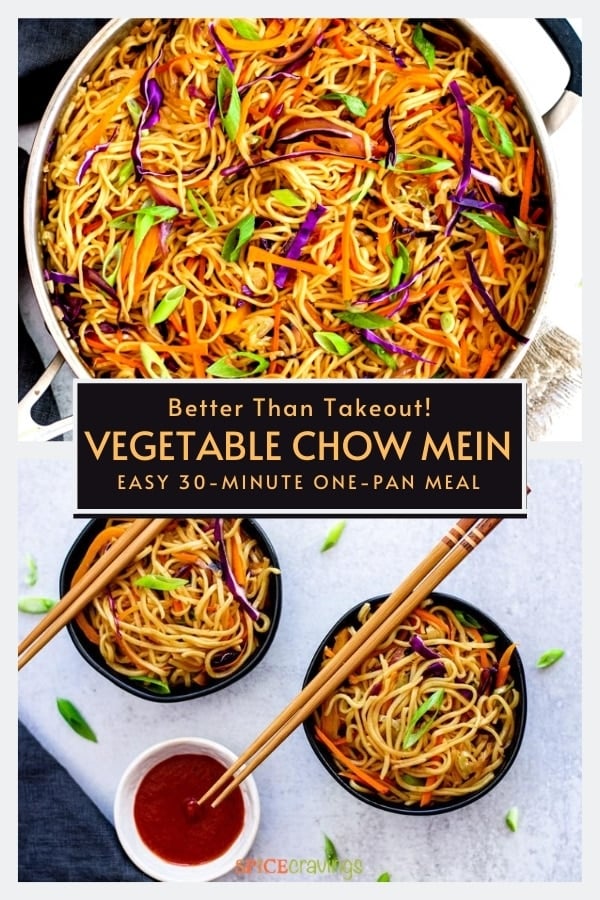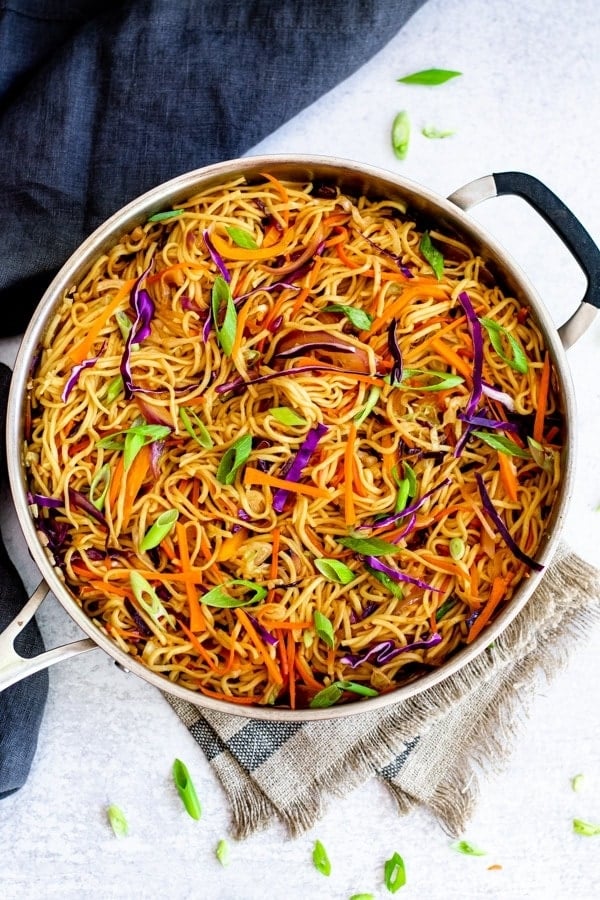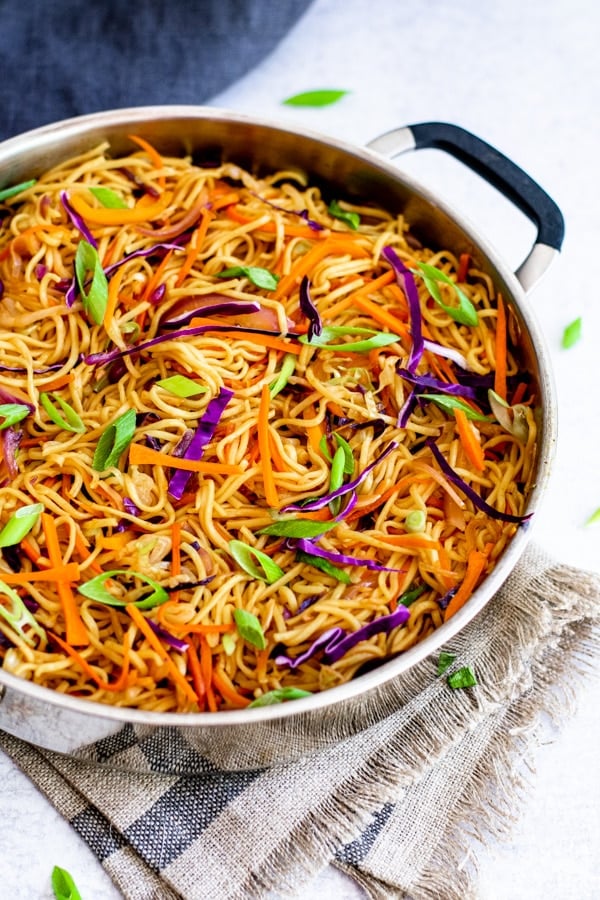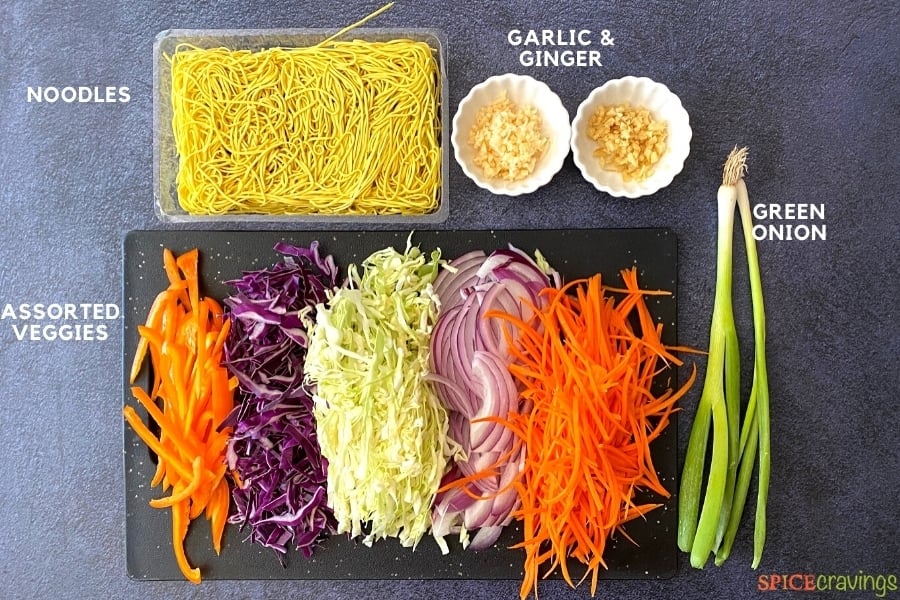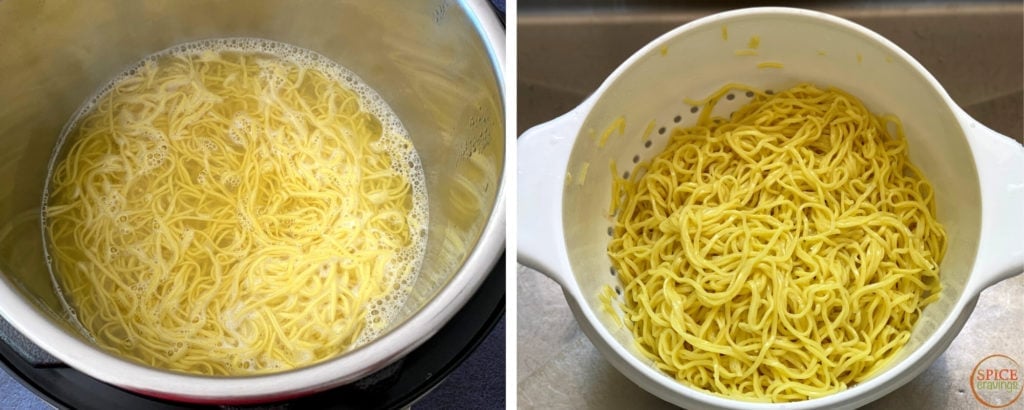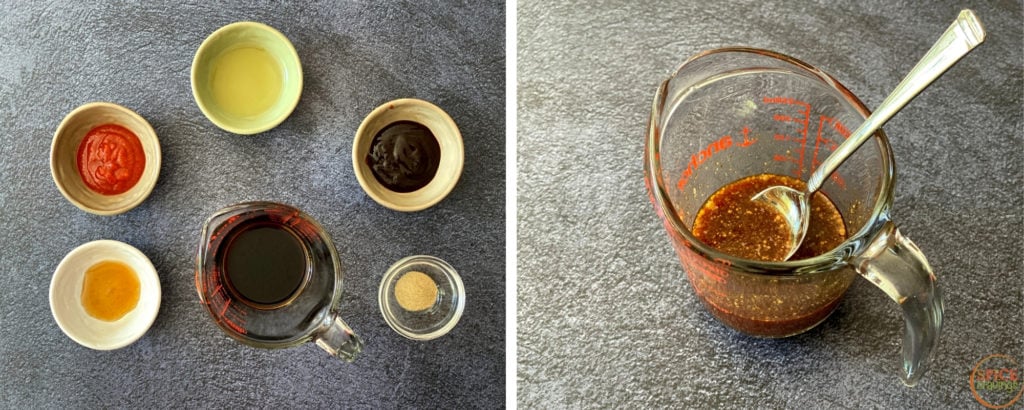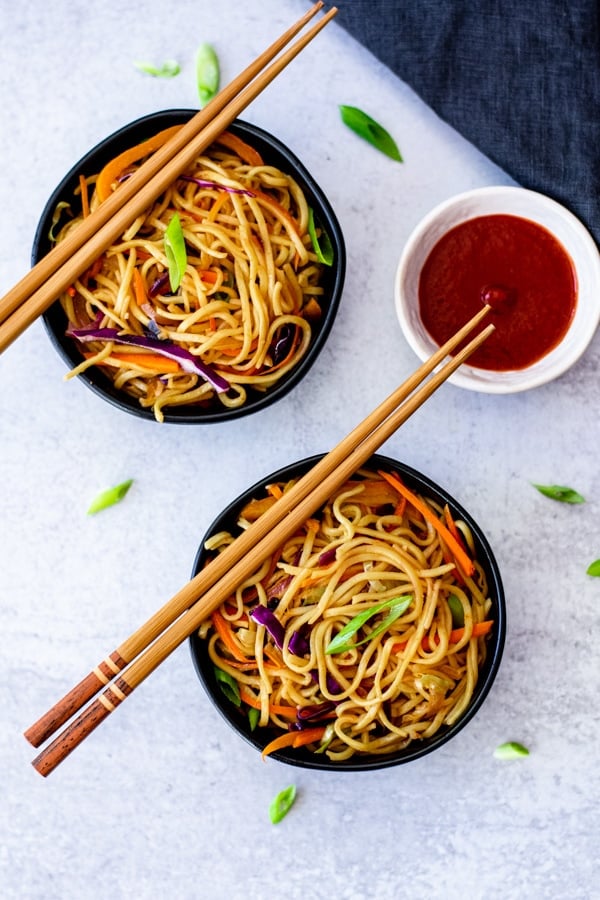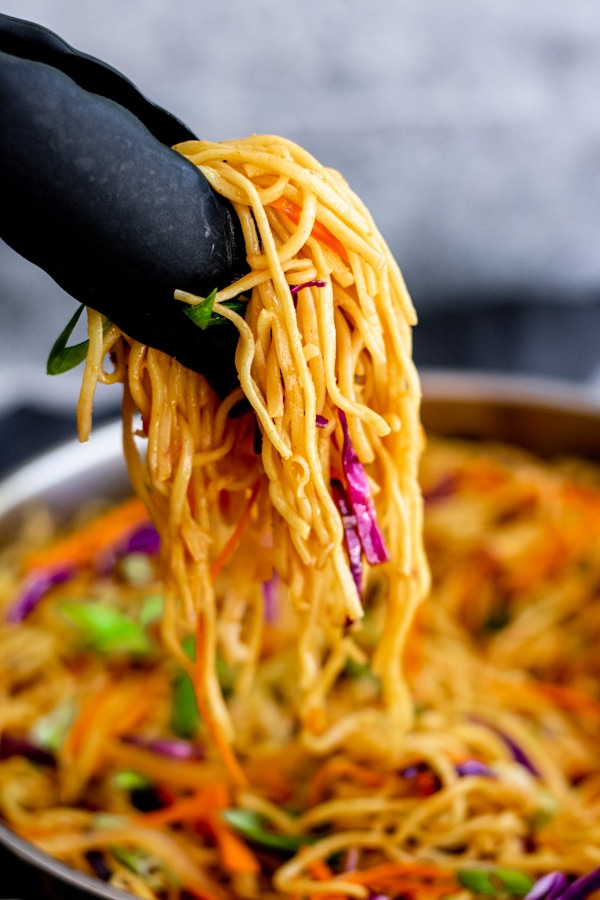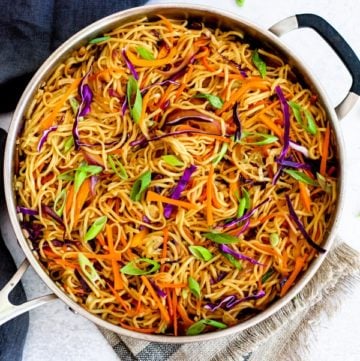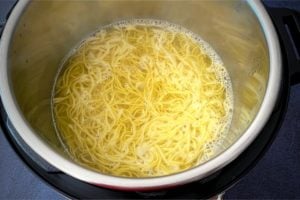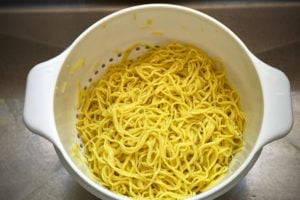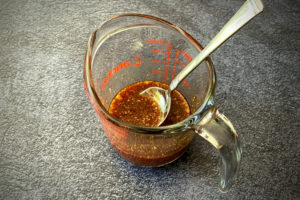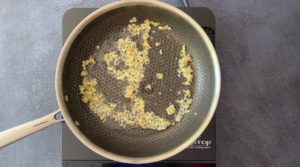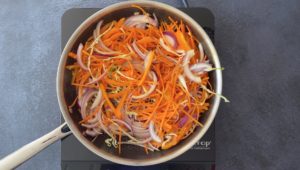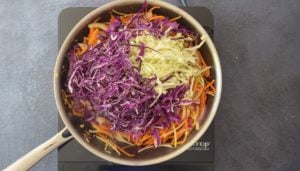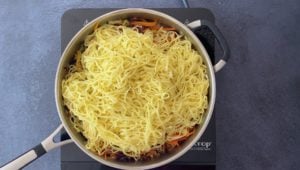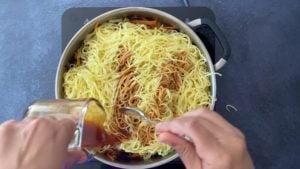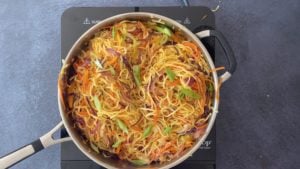Restaurant-Style Chow Mein
This vegetable chow mein recipe surely satisfies that Chinese take-out craving. Fresh and colorful vegetables are stir-fried in a super hot skillet, then tossed with perfectly cooked chow mein noodles and a spicy-sweet-salty sauce. (Hungry yet?:)
It’s a super-fast, homemade, easy chow mein recipe that takes less time to make at home than ordering delivery at your favorite Chinese restaurant.
Easy Chow Mein Recipe - Faster Than Take-Out
If you are anything like me and crave Chinese take-out on the regular, then this vegetable chow mein recipe is for you. I always have time to toss this together because:
Chow mein noodles require a quick 3-minute cooking time.It’s packed with fresh and aromatic vegetables available in every season.It’s a one-pan recipe ready in only 25 minutes!It can be transformed into a complete meal with the addition of fried eggs or lean protein.
Ingredients - Notes & Substitutions
The bulk of ingredients are Asian pantry staples and chow mein noodles you can easily find nowadays in the global section of grocery stores, Asian markets or online. All that’s left is a few aromatics and fresh vegetables to pick-up the day you are going to stir-fry.
Hoisin Sauce: Hoisin sauce is a sweet, spicy, dark red sauce made from soybeans, red chile peppers, garlic and various spices. I like to think of it as Chinese BBQ sauce. Look for it in the global section of grocery stores. If unavailable, oyster sauce is a great substitute as it adds the same umami-rich savoriness (Note: Oyster is made from the extraction of oysters, so seek out a vegetarian-friendly brand made from mushrooms, if necessary).Sesame Oil: Sesame oil comes in two styles - raw and toasted. Plain (raw) sesame oil is a neutral, mild-flavored cooking oil best used in high-heat cooking preparations such as stir-fries. This is the style we want. Toasted sesame oil (sometimes called Dark, Black or Asian Sesame Oil) is darker and richer with a nutty and toasty flavor. It is primarily used as a finishing oil. If that’s all you have, add half the suggested quantity towards the end, while stir-frying.Chow Mein Noodles: Chow mein noodles are Chinese egg noodles (wheat flour noodles with egg added) which are available either fresh or dried. Although fresh egg noodles cook faster than dried, the exact cooking time really comes down to the brand and thickness of the noodles. Simply follow the package directions for best results and boil until they are just cooked through without becoming too soft. If Chinese noodles are unavailable, Italian pasta such as linguine or thin spaghetti makes a great substitute.Vegetables: I love the combination of onions, peppers, carrots and cabbage, but this is when you can get creative! Swap out the veggies with any mix of seasonal produce such as zucchini, asparagus, green beans, broccoli, bok choy, snow peas or mushrooms.
Step by Step Instructions for Chow Mein with Vegetables
The chow mein noodles only take 3 minutes to boil and then require an immediate shock in cold water. Feel free to do this while you prep the vegetables or 1-2 days in advance to already be one step ahead. A quick mix of the sauce, a simple stir-fry at high heat and you have a piping hot take-out worthy meal in under 30 minutes.
1. Prepare Noodles
Prepare the noodles as per package directions. I use Chow Mein Stir-Fry Noodles that I boil in an Instant Pot or a stockpot for 3 minutes. When done, drain in a large colander and rinse with cold water to stop the cooking process and rinse off the excess starch.Drizzle 1 tablespoon oil on the noodles and toss well to coat the noodles with the oil.
2. Prepare Sauce
In a small mixing cup or bowl, combine soy sauce, vinegar, sriracha, hoisin sauce, pepper and sesame oil, and mix well. Keep aside.
3. Prepare Chow Mein
Heat a large chef pan or skillet on medium-high heat. When hot, add oil, minced garlic and ginger and saute for 30 seconds until they start sizzling (Pic 1).Add sliced onions, peppers and julienned carrots and stir-fry for 2 minutes, or until the onions start to turn translucent (Pic 2).Add shredded cabbage and stir-fry another 2 minutes (Pic 3).Then, add the cooked noodles to the pan (Pic 4).Pour the sauce over the noodles and with the help of tongs or two spoons, toss everything to coat with the sauce (Pic 5).Stir-fry another minute till everything is well combined. Check and adjust seasoning. Turn off the heat and garnish with sliced green onions (Pic 6).
Serving Suggestion- Size & Pairing
A 6-ounce pack of noodles makes enough for my family of 4 when we have it with a fried egg or another stir-fry entree. I also love to serve it alongside chilli paneer to make a delicious and umami-packed weeknight meal. If having chow mein by itself, this recipe will serve 3 people comfortably.
Dietary Variations to Try
This homemade chow mein can complement a number of dietary lifestyles with a simple swap or addition of ingredients. Feel free to try:
Low Carb: Swap out the chow mein noodles for tofu noodles or zucchini noodles . Rather than boiling, soak the tofu noodles for 10-15 minutes in water to reconstitute them. Zucchini noodles can be used as-is.Low Sodium: Use a low-sodium soy sauce for reduced sodium chow mein.High Protein: Stir-fry 1-inch pieces of boneless, skinless chicken, beef, shrimp or tofu in 1 tablespoon of oil for 3-7 minutes (depending on protein choice). Remove and proceed to prepare the chow mein. Add the protein back in at the very end.
Make-Ahead & Storage Instructions
This vegetarian noodle recipe makes a great make-ahead meal to enjoy as a light lunch throughout the week. Leftovers will keep in an airtight container in the fridge for up to 4 days. For longer storage, feel free to freeze this vegetable chow mein in an airtight container for 2 months. Defrost the chow mein overnight in the fridge and reheat in a skillet, adding more sauce to prevent the noodles from drying out. Note: If you decide to make this meal ahead, double the sauce recipe and store the extra alongside in the fridge (or freezer). Add 1-2 Tablespoons of extra sauce while reheating to prevent the noodles from drying out. Use up the rest of the sauce on veggies or rice throughout the week.
Recipe Tips & Notes
Use chow mein stir-fry noodles. These are easy to find in 6-ounce packages in grocery stores. If unavailable, Italian linguine or spaghetti are good substitutes, but the cooking time is longer. You could even try Japanese Yakisoba noodles (minus the seasoning sauce that comes along with it).Prep all the vegetables before cooking. The active cooking time is roughly 5-6 minutes, so it’s important to have all of the ingredients prepped and ready to go beforehand.Use a half-and-half mix of cabbage or one variety. I like to use a mix of green and purple cabbage for both color and flavor, but one type of cabbage is just as delicious. Napa cabbage would be great all on its own.Make it in a large chef pan or wok. I love my chef pan, but this recipe can be made the more traditional way using a wok if you have one. If you use a wok, be prepared to stir the food constantly so it doesn’t burn.Serves three on its own or four with a lean protein. If having chow mein by itself, this recipe should serve 3 people comfortably. That being said, a 6-oz pack of noodles makes enough for my family of four when we have it with a fried egg, lean protein or another stir-fry entree.
More Chinese Inspired Dishes From My Kitchen
Chilli Paneer: Soft paneer cubes pan-fried to crispy perfection, then stir-fried with vegetables and a lip-smacking, umami-packed sauce.Chicken Lo Mein: An easy dump and start one-pot recipe for a popular Chinese takeout featuring chicken, vegetables and thin noodles.Vegetable Manchurian: Vegetable meatballs simmered in a sweet, spicy, tangy Asian sauce prepared in the Instant Pot or on the Stove. Easy Wonton Soup: A weeknight-friendly recipe made with frozen store-bought wontons in a flavor-packed broth ready in 30 minutes.Chicken Corn Soup: Creamy soup made with chicken, sweet corn and vegetables finished with an egg drop confetti in the Instant Pot or on the Stove.
📖 Recipe
